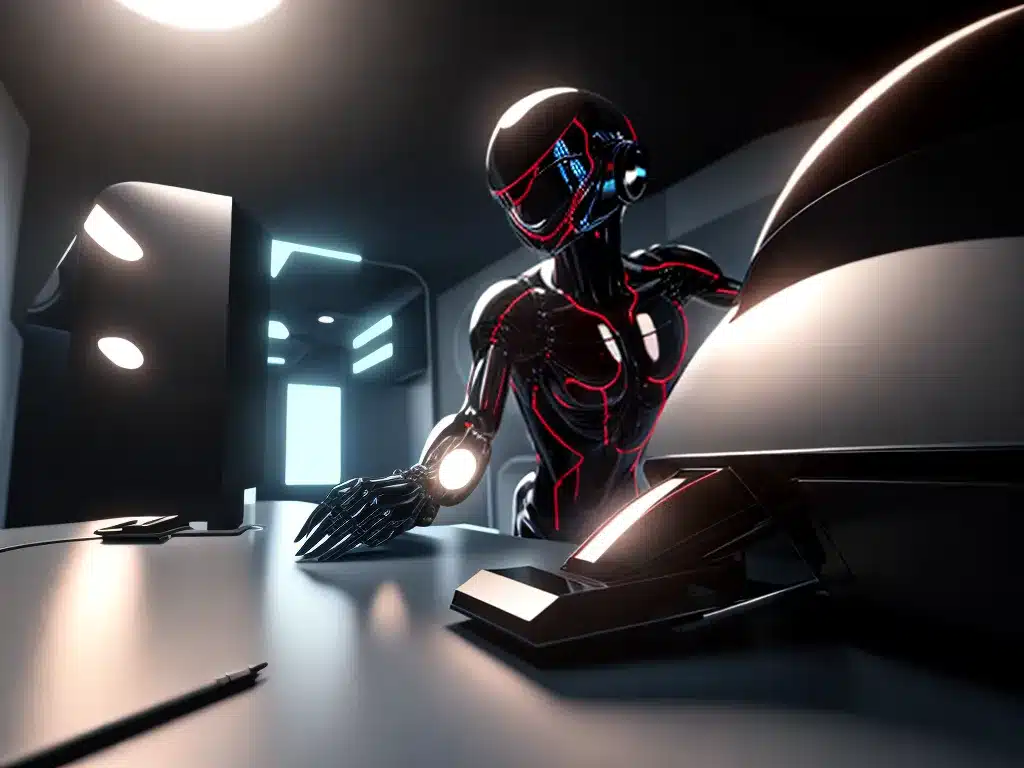
Introduction
Ray tracing is a revolutionary rendering technique that takes computer graphics to unprecedented levels of realism. By accurately simulating the physical behavior of light, ray tracing generates stunningly photorealistic imagery and lighting effects. In this article, I explore 8 key ways ray tracing is advancing graphics and bringing us closer to CG scenes indistinguishable from reality.
1. Realistic Shadows and Lighting
One of ray tracing’s biggest advantages is its ability to render shadows and lighting effects much more accurately than previous techniques like rasterization. Traditional rasterized graphics rely on various tricks and approximations to fake shadows.
But ray tracing calculates shadows directly by tracing rays of light and simulating the physical interactions. This allows natural soft shadows with proper penumbrae, as well as accurate diffuse interreflection and ambient occlusion. The lighting behaves exactly as it would in the real world.
Overall, scenes rendered with ray traced shadows and lighting have a much higher degree of realism. Subtle cues from the lighting sell the authenticity of materials and spaces.
2. Correct Reflections and Refractions
In addition to shadows and direct illumination, ray tracing also handles complex reflective and refractive surface materials far more accurately.
Rasterized graphics use various hacks like reflection maps to approximate reflections. But ray tracing tracks the physically-correct paths of light rays as they bounce off mirrored and reflective surfaces. This enables true dynamic reflections that automatically show the proper reflected objects, naturally blurring with distance.
Refractions through transparent materials like glass are also perfect, with true warped and distorted views based on the shape, angles and material properties. Ray tracing takes care of the complex light behavior automatically.
3. Photoreal Materials
With the accurate lighting and reflections powered by ray tracing, materials take on a much more realistic appearance. Surfaces like metal, glass, water and skin can be rendered with great authenticity.
Subtle material qualities like surface scattering, fresnel reflections, rough glossiness and translucency are effortlessly achieved with ray tracing. Traditional rasterized graphics require extensive hacks and approximations to emulate these advanced material properties.
Rich, realistic materials are key for CG to pass as real photography, and ray tracing gets us very close.
4. Detailed Ambient Occlusion
Ambient occlusion is a technique that darkens creases, contacts and surfaces that are close together, simulating how they would be shaded from ambient light. It greatly enhances the perception of shape and depth.
Rasterized ambient occlusion solutions are often crude approximations. But ray traced ambient occlusion can account for precise occlusion and visibility based on the scene geometry. This brings out nuanced surface details and complexity even in tiny nooks and gaps.
The accuracy of ray traced ambient occlusion adds realism and visual complexity that would be very difficult to achieve otherwise.
5. Life-Like Volumetrics
Volumetric effects like smoke, fog, clouds and water vapor have been a notorious challenge for traditional real-time graphics. Ray tracing provides a practical solution to rendering volumetrics that behave convincingly in real-time.
By step-tracing through participating media and accounting for light scattering, ray tracing can render highly realistic volumetric light effects. The volumes interact properly with scene lighting and materials.
Believable volumetric effects go a long way in enhancing the atmosphere and tangibility of CG environments. Ray tracing makes these critical effects possible.
6. Correct Global Illumination
Ray tracing excels at global illumination – simulations of bounce lighting between surfaces and objects. Rasterized solutions generally use gross approximations or pre-baked lighting.
But ray tracing can accurately compute global illumination in real-time by tracing light paths throughout the scene. This captures indirect lighting, color bleeding and bounce light in a physically correct way.
Realistic global illumination is key for interior scenes feeling grounded and plausible. Ray tracing provides the most accurate real-time GI solution.
7. Reduced Artifacts
Rasterized graphics produce various visual artifacts due to the many hacks and approximations used. Flickering, temporal instability, jagged edges and surface noise are common problems.
Ray tracing eliminates almost all of these artifacts by directly simulating light transport rather than using cheap tricks. Scenes rendered with ray tracing tend to be free of distracting visual imperfections.
Cleaner imagery makes real-time CG much more convincing and easier to perceive as realistic. Ray tracing provides huge visual benefits.
8. streamlined Development
With ray tracing providing unified, physically-based solutions to lighting, shadows, reflections and more, graphics development is greatly streamlined.
There is no need to cobble together various rasterized effects and complex shader hacks to fake realistic graphics. Ray tracing provides a robust, complete solution for advanced real-time rendering.
By reducing the workload required to achieve state-of-the-art visuals, ray tracing enables more effort to be put into content creation and other areas.
The Future of Graphics is Ray Traced
Real-time ray tracing represents the future of computer graphics, enabling unprecedented realism. As the technology matures, ray tracing will transform both gaming and non-gaming graphics with its accuracy and efficiency.
Nvidia’s RTX platform has brought real-time ray tracing into the hands of consumers, showcasing its massive advantages. AMD and Intel also have ray tracing solutions in development. The rendering technique will likely become standard in the coming years.
Ray tracing closes the gap between real-time and offline CG. Coupled with advancements in areas like AI-assisted content creation, it makes truly photoreal games and applications possible. We are entering an exciting new era of computer graphics powered by ray tracing.












